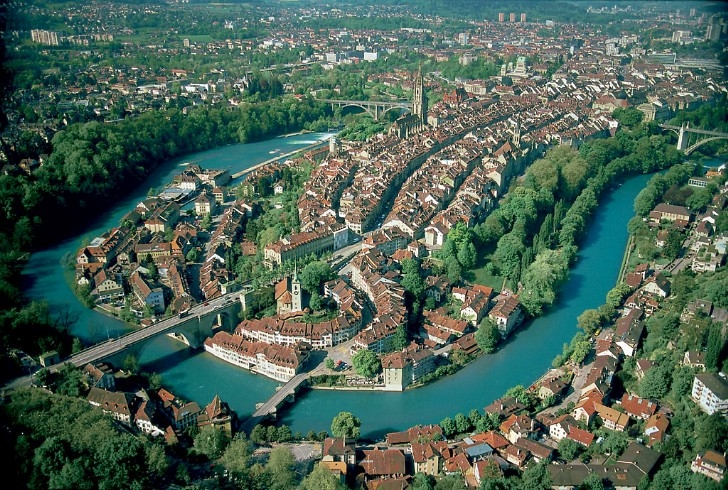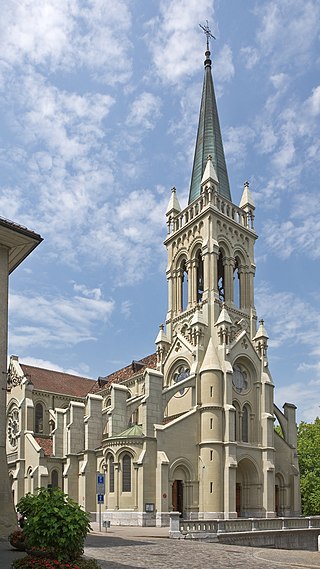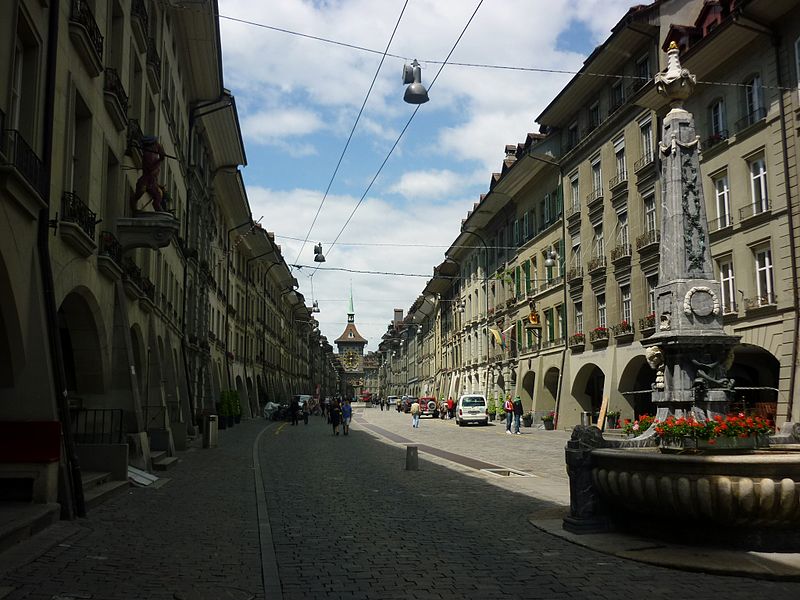
Bern: 11 February 2016 / Landschlacht: Easter 2016
A while back, before silence dominated and clouds hung heavy over my head, I began to tell a story about Bern and its people, but much like a cyclist making a sharp turn and crashing onto the ground as his bike slips out from under him on the icy cobblestones, sending things flying in all directions, so have been my thoughts of recent days.
But now I ask that you, gentle readers, follow me to a picturesque city on the River Aare and walk with me between fine buildings lining cobbled streets of one of Europe´s most beautiful and historic towns.

Soak in the atmosphere of this town, home to a university, the seat of the Federal Assembly and the headquarters of several international organisations.
The University of Bern
I have always liked Bern, for it values pedestrians and caters to them with pedestrian-only streets and good public transport.
There is much to see and do in this capital that it is hard to know where to begin.
One can shop in department stores or browse in the markets and buy all manner of things: chocolate, shoes and leather goods, music and books, watches and jewellery, crafts and souvenirs, art and antiques.
And let the town entertain you with puppet theatres and zoos, casinos and clubs, cultural centres and live theatre performances, cinemas and festivals.
Museums?
Where does one begin?
You can choose from the Natural History Museum, the Swiss Rifle Museum, the Bern Historical Museum, the Museum of Communication, the Swiss Alpine Museum, the Kunsthalle (contemporary art gallery), the Albert Einstein Museum, the Bern Collection of Classical Antiquities, the Museum of Fine Arts, the Paul Klee Centre and the Swiss Theatre Museum.
The Paul Klee Centre
Lovers of nature can watch the bears in the Bear Pit, see animals amongst thick lush woods in the Bern Zoo, visit the nurseries and the monastery in Elfenau Park, and explore the acres and acres of greenhouses and greenery in the Botanical Gardens.

The Bear Pits
And, yes, I beg your pardon, Bern even promises you a Rose Garden, with over 223 types of roses, 200 types of irises and 28 different types of rhododendrons, as well as a pond where water lillies flourish.
Wander the streets and be moved by the majesty of magnificent structures to God, including the Holy Spirit Church, the Saints Peter and Paul Church, and St. Vincent´s Cathedral with the highest bell tower and largest bell in Switzerland.

Saints Peter and Paul Church
Stroll the avenue of the arches and see the many many fountains that grace the city.

And in the centre of the old city, the Zytglogge (the clock tower) is as much as the symbol of Bern as its bears.
The Zytglogge is the focal point of public transport and walking routes, the benchmark of official Bern time and the geographical point from which all distances in the Canton are measured.
The Zytlogge´s squat shape, its giant spired roof and its huge gilded clock face brand the image of this tower on your memory for time immemorial.
It is an intricate astronomical and astrological delight, displaying a 24-hour clock, the position of the sun in the zodiac, the day of the week, the date and the month, the phases of the moon and the elevation of the sun above the horizon.
But tourists couldn´t care less, for they gather to watch the display of mechanical movement that is set into motion four minutes before every hour on the clock´s east face.
A rooster crows.
Bears parade.
Chronos demonstrates his hourglass while a jester dances a jig.
Much like the real size of Brussels´ Manneken Pis or Paris´ Louvre exhibit of Leonardo da Vinci´s Mona Lisa, this spectacle of :56 to :00 is underwhelming in its actuality, but yet the throngs still congregate like faithful pilgrims to holy shrines of tourist lore to see the wee figures go through their ritualistic motions.
But step away from the tourist throngs and the shopping arcade and consider those who have chosen to call Bern “home”.
And I don´t mean those ministers and parliamentary folks who serve the Swiss in various governmental capacities but instead ponder the folk who take these cobblestones and fountains and towers for granted.
Artists and rebels have called Bern theirs as have scientists and all types of ordinary sorts.
As a tourist I have met those whose legacy continues to impress long after they themselves have shirk their mortal coils.
The artists: Niklaus Deutsch (1484 – 1530), the naturalist Albert Anker (1831 – 1910), the symbolist Ferdinand Hodler (1853 – 1918), brut artist Adolf Wölfi (1864 – 1930) and abstractionist Paul Klee (1879 – 1940).
The builders: Berthold V of Zähringen, the founder of Bern; Ludwig Zehender, who built an orphange that today serves as the main police station; Anna Seiler, who founded the city´s first hospital; Kaspar Brunner, who built the aforementioned Zytglogge; and Hans Gieng, who built many of the famous fountains that dot the urban landscape.
The rebels: reformers Niklaus Sprüngli and Lorenz Schmidt, anarchists Peter Kropotkin and Mikhail Bakurin, radical leftist squatters of the AJZ Reitschule, and even Lenin himself lived here for a time.
The teachers: Albert Einstein and my old friend Monica Herrmann (who happily is not yet to be listed as deceased!).
All have left their mark on Bern and the world.
All were captivated and shaped by Bern.
It was good to see Monica again.
She had, for a few months, shared a flat with Ute (my wife) and I when we lived in Freiburg im Breisgau, in Germany´s Black Forest.
She amused me then and she amuses me now.
Then she followed a custom that I still see some Bern women do: shave off your eyebrows and paint them on again.
I didn´t understand this then and I still don´t now.
Like many women Monica can be vain.
She liked, and still likes, to display her feminine charms in low cut blouses and high heel shoes, making my wife constantly concerned as to my vulnerability!
But where my vulnerability lies in not in Monica´s sexuality but rather in her strength of character and clear intelligence – the very same attributes that drew me to my wife.
We talk shop (we are both teachers) and share memories and catch up with events that have transpired over the past decade.
It is with great love and affection she talks of her school and her students and her life here in the capital.
And I think to myself that this, right here, is the reason I left Canada to live abroad, why I left the comforts of home to explore the world in my own limited fashion.
Not to peer down a woman´s blouse or admire the posture heels lend a woman´s walk.
Not to cross off a “To do” list places seen and sites visited.
But rather to share a moment in time and space with another person who is so different from oneself.
To see the world not just from my own perspective but through the eyes of those who intimately live in places and know the place´s nuances in a way that would be lost to me otherwise.
For a place is not just its old buildings, its monuments to past glories, its tourist traps or its wonders natural or manufactured, a place is its people who shaped and continue to shape its destiny.
And I think this is something the average tourist, the backpacking bar-hopping type or the hotel/B&B crowd, doesn´t see.
How can they? – for they are restricted by not only limits of time and money but as well their experience and exposure has also been curtailed by their accommodation and choice of itineria.
Though I often suspect the couchsurfing movement to be more of a freeloaders´ thriftiness trend than it is an immersion into a place´s milieu, I still think that at least sleeping in a resident´s spare bed or on their sofa still exposes a traveller to the reality of a place far more than an anonymous hotel room ever can.
And who knows?
That resident file clerk, that mere dabbler in paint, that unknown scribe, that humble teacher of young people, might make a powerful impact on things in the future.
But even this doesn´t matter.
For it is in meeting other people that we affect one another.
And isn´t this, after all is said and done, the reason to walk outside our door?
Not just to see, but rather – to be.

